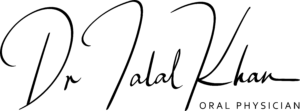The perfect man breathes as if he does not breathe
It’s important to understand that crowded teeth are a symptom of underdeveloped jaws.
Simply straightening the teeth does not actually fix the problem.
The three well known causes of underdeveloped jaws are:
However, many ignore the fact that underdeveloped jaws are also a symptom of something else: a locked primary respiratory mechanism (PRM). And this is perhaps the most important cause of them all!
The PRM is an osteopathic term that refers to the rhythmic motion of bones and tissues. This is primary and precedes the secondary respiratory mechanism which is the act of inhalation/exhalation that we all know to be breathing. This rhythmic motion is what hydraulically pumps the cerebrospinal fluid down the spinal column and back up into the brain.
The PRM begins when the fertilised egg implants into the uterine wall. At this time, a suction motion begins to develop so that the developing embryo can extract nutrients from the mother prior to the placenta forming. This rhythmic motion is preserved throughout the entire development cycle of the embryo into foetus and finally a newborn baby.
During this development, the brain and spinal cord become encased in a sheath or membrane that is anchored into the tailbone (sacrum) and attaches into the skull. This sheath is referred to as the dura mater.
As a fully formed human, the motion that initially developed in the fertilised egg is now found in a gentle and rhythmic motion of the cranial and sacral bones.
Naturally, if there is a trauma to the head or tailbone, this pulls on the dura and creates a torque that can twist the cranium or sacrum….or both!
The end result is:
and a significant number of postural compensations that come associated with this.
The locked cranium
Furthermore, the twisted sacrum can lead to postural compensations which include:
The crooked craniosacral mechanism is the primary compensation.
The secondary compensation is the small jaws, crowded teeth, postural pains.
To simply focus on the secondary compensations would be a half job.
It’s essentially straightening teeth in crooked faces.
Once we do that, we lock in the cranial and sacral strains. The person cannot get out of the twists and bends because the straightened teeth lock them in. I’ve seen countless patients who see manual therapists fortnightly/monthly and can never hold the adjustments. Because the patients and unfortunately the clinicians are unaware that it is the teeth and jaws that close the postural circuit. And when they are off, everything is off.
Because of this perspective, I rarely treat patients without enlisting the guidance of my cranial osteopath, Cole Clayton. Cole has more than a decade of experience in cranial osteopathy and has been working with dentists for that period of time.
During our consults, Cole and I assess patients from a variety of lenses, looking at:
Sometimes we refer out to trust colleagues such as:
Our consults are extremely informative and value packed.
I encourage you to book in for an initial consultation with me so we can begin your journey towards optimal health.
I look forward to seeing you soon.
